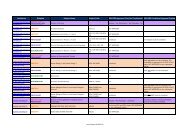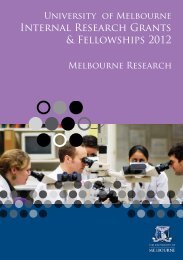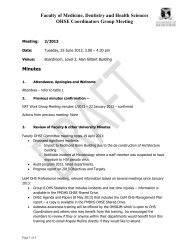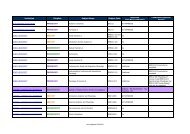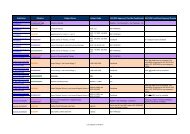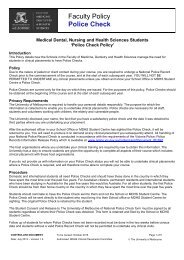A Body of Evidence: An Art Historical perspective on Eighteenth and ...
A Body of Evidence: An Art Historical perspective on Eighteenth and ...
A Body of Evidence: An Art Historical perspective on Eighteenth and ...
You also want an ePaper? Increase the reach of your titles
YUMPU automatically turns print PDFs into web optimized ePapers that Google loves.
models were closely modelled <strong>on</strong> actual dissecti<strong>on</strong>s <strong>and</strong> dem<strong>on</strong>strated anatomy<br />
without the problems <str<strong>on</strong>g>of</str<strong>on</strong>g> decompositi<strong>on</strong>.<br />
Decay was <str<strong>on</strong>g>of</str<strong>on</strong>g> particular c<strong>on</strong>cern as <str<strong>on</strong>g>of</str<strong>on</strong>g>ten the universities were <strong>on</strong>ly permitted to<br />
use a limited number <str<strong>on</strong>g>of</str<strong>on</strong>g> bodies each year for dissecti<strong>on</strong>. 29 The progressive<br />
relaxati<strong>on</strong> <str<strong>on</strong>g>of</str<strong>on</strong>g> laws governing dissecti<strong>on</strong> meant that it was no l<strong>on</strong>ger illegal to<br />
perform dissecti<strong>on</strong>s in many countries, but it was still closely regulated because<br />
<str<strong>on</strong>g>of</str<strong>on</strong>g> the c<strong>on</strong>tinuing fear that corpses would be stolen from graveyards for this<br />
purpose. 30 Added to this was the difficulty involved in both clearly viewing the<br />
parts <str<strong>on</strong>g>of</str<strong>on</strong>g> the body <strong>and</strong> preserving them over a number <str<strong>on</strong>g>of</str<strong>on</strong>g> dissecti<strong>on</strong>s. A soluti<strong>on</strong><br />
to this was to create realistic but bloodless models.<br />
Gaetano Zumbo<br />
In the late seventeenth century, the Syracusan artist Abate Gaetano Giulio<br />
Zumbo (1656–1701) was am<strong>on</strong>g the first artists to create anatomical models from<br />
coloured wax. 31 A younger s<strong>on</strong>, Zumbo at first entered the priesthood <strong>and</strong> then<br />
later set about teaching himself sculpture. He was particularly influenced by<br />
29 Sawday, 1995, p. 35.<br />
30 The activities <str<strong>on</strong>g>of</str<strong>on</strong>g> the ‘Resurrecti<strong>on</strong>ists’, or grave robbers, were <str<strong>on</strong>g>of</str<strong>on</strong>g> particular c<strong>on</strong>cern throughout the<br />
history <str<strong>on</strong>g>of</str<strong>on</strong>g> dissecti<strong>on</strong> in Europe. This came to note particularly in Britain with the case <str<strong>on</strong>g>of</str<strong>on</strong>g> Burke <strong>and</strong> Hare<br />
who were found to have murdered sixteen people <strong>and</strong> then robbed their graves to supply anatomists in the<br />
early nineteenth century. Thereafter body snatching was called ‘burking’ in Britain. Burmeister, 2000,<br />
p. 26.<br />
31 Lightbown, 1964, 486. Informati<strong>on</strong> relating to the life <str<strong>on</strong>g>of</str<strong>on</strong>g> Gaetano Giulio Zumbo is extensively drawn<br />
from R.W. Lightbown’s illuminating articles in The Burlingt<strong>on</strong> Magazine. There is a lack <str<strong>on</strong>g>of</str<strong>on</strong>g> other<br />
informati<strong>on</strong> regarding this artist; as such most other references have in turn used this article as their source.



